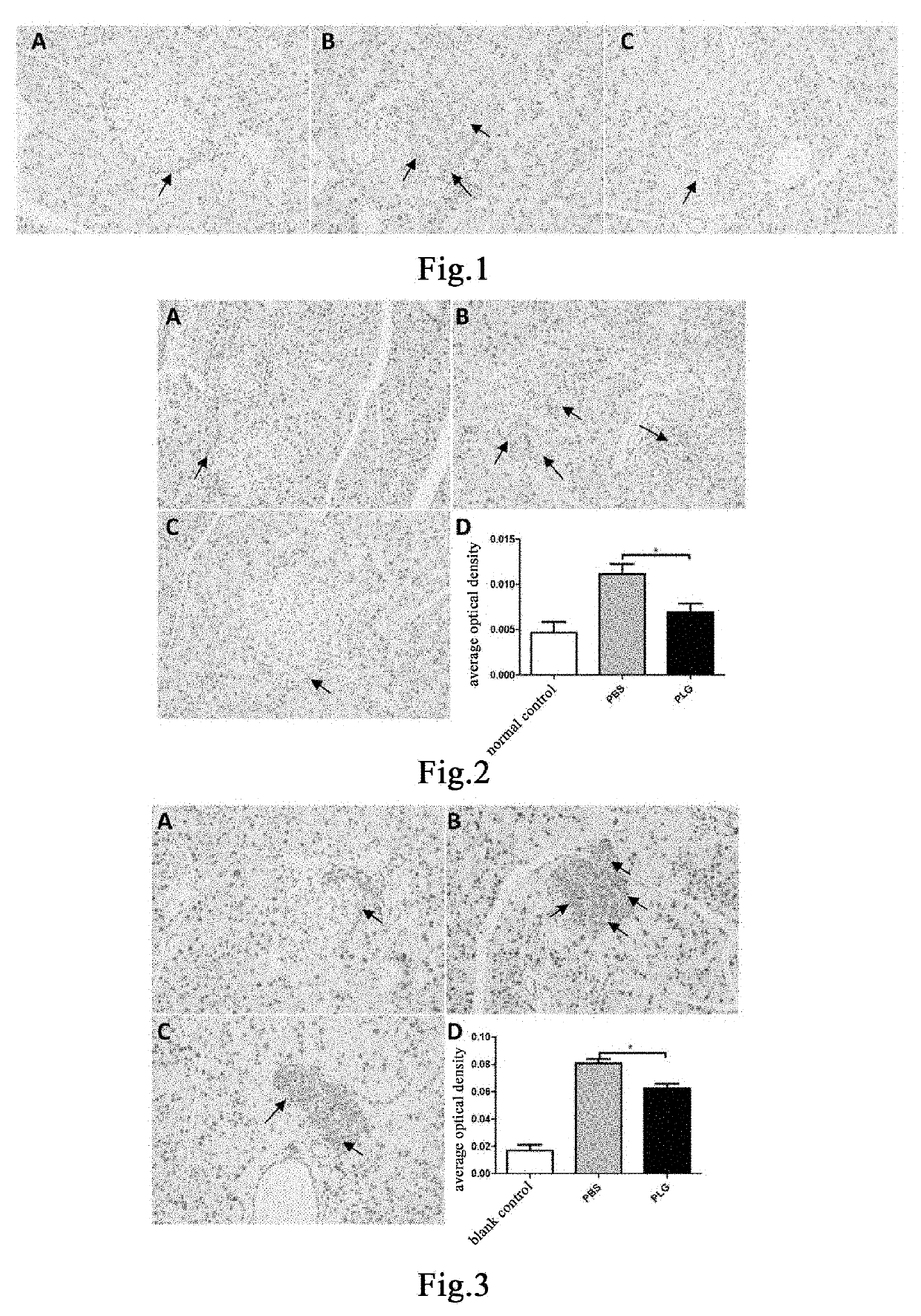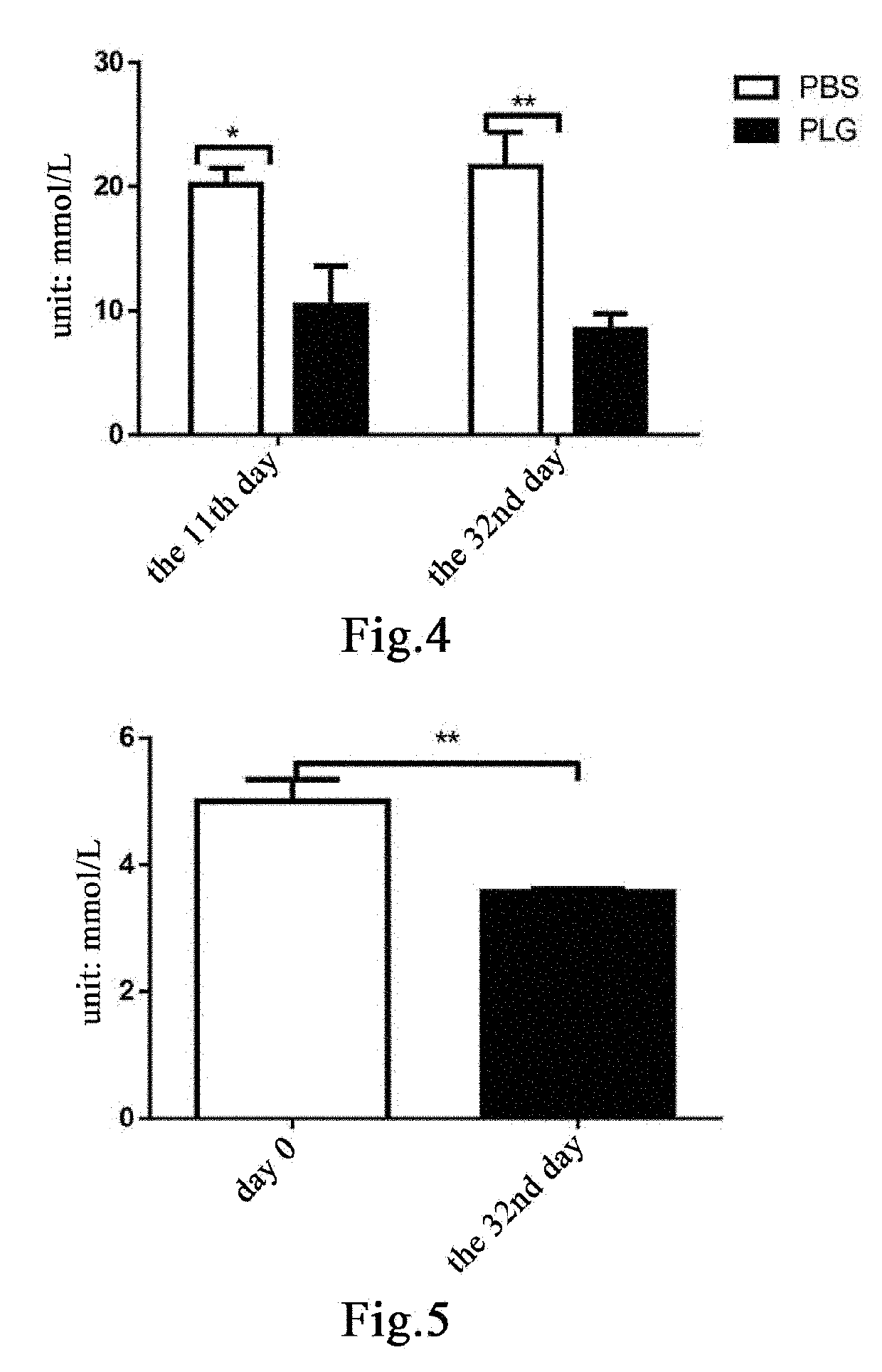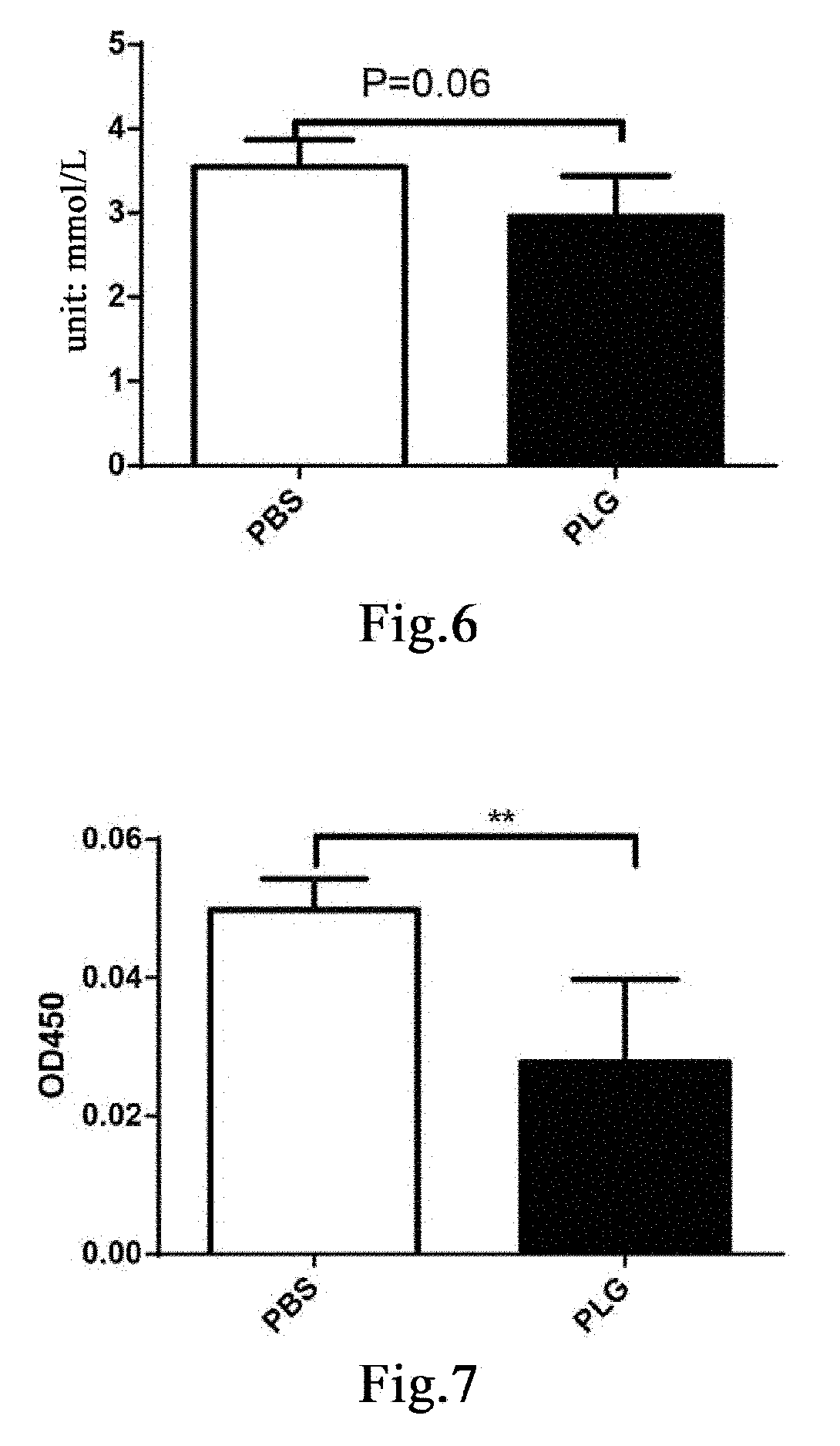Method for making glucagon and insulin restore normal balance
a technology of glucagon and glucagon, which is applied in the direction of drug compositions, peptide/protein ingredients, metabolic disorders, etc., can solve the problems of serious diabetic complications, serious human health harm, and impact on the quality of life of patients, so as to reduce the apoptosis of pancreatic islet cells, reduce inflammation, and reduce the effect of pancreatic islet cell apoptosis
- Summary
- Abstract
- Description
- Claims
- Application Information
AI Technical Summary
Benefits of technology
Problems solved by technology
Method used
Image
Examples
example 1
en Reduces Proliferation of Pancreatic Islet α Cells in 24- to 25-Week-Old Diabetic Mice, Restores Normal Distribution of Pancreatic Islet α Cells and Reduces Secretion of Glucagon
[0201]Eleven male db / db mice and five male db / m mice, 24-25 weeks old, were weighed and the db / db mice were weighed and then randomly divided into two groups, a group of 5 mice administered with plasminogen and a control group of 6 mice administered with vehicle PBS, on the day the experiment started that was recorded as day 0; in addition, the db / m mice were used as a normal control group. Starting from day 1, plasminogen or PBS was administered. The mice in the group administered with plasminogen were injected with human plasminogen at a dose of 2 mg / 0.2 mL / mouse / day via the tail vein, and the mice in the control group administered with vehicle PBS was injected with an equal volume of PBS via the tail vein or without any liquid, both lasting for 31 consecutive days. On day 32, the mice were sacrificed, a...
example 2
en Inhibits Proliferation of Pancreatic Islet α Cells In 26-Week-Old Diabetic Mice, Restores Normal Distribution of Pancreatic Islet α Cells and Reduces Secretion of Glucagon
[0204]Nine male db / db mice and three male db / m mice, 26 weeks old, were weighed and the db / db mice were weighed and then randomly divided into two groups, a group of 4 mice administered with plasminogen and a control group of 5 mice administered with vehicle PBS, on the day the experiment started that was recorded as day 0; in addition, the db / m mice were used as a normal control group. Starting from day 1, plasminogen or PBS was administered. The mice in the group administered with plasminogen were injected with human plasminogen at a dose of 2 mg / 0.2 mL / mouse / day via the tail vein, and the mice in the control group administered with vehicle PBS were injected with an equal volume of PBS via the tail vein, both lasting for 35 consecutive days. On day 36, the mice were sacrificed, and the pancreas was taken and f...
example 3
en Reduces Secretion of Glucagon in Mice with Normal PLG Activity in T1DM Model
[0207]Fifteen 9- to 10-week-old male db / db mice with normal PLG activity were randomly divided into three groups, a blank control group, a control group administered with vehicle PBS and a group administered with plasminogen, with 5 mice in each group. The mice in the group administered with vehicle PBS and the group administered with plasminogen were fasted for 4 hours and then intraperitoneally injected with 200 mg / kg STZ (Sigma, Cat# S0130), in a single dose, to induce the T1DM model[43], while the blank group was not treated. 12 days after the injection, administration was carried out and this day was set as administration day 1. The group administered with plasminogen was injected with human plasmin at a dose of 1 mg / 0.1 mL / mouse / day via the tail vein, and the control group administered with vehicle PBS was injected with an equal volume of PBS via the tail vein, both lasting for 28 consecutive days. ...
PUM
| Property | Measurement | Unit |
|---|---|---|
| insulin resistance | aaaaa | aaaaa |
| concentration | aaaaa | aaaaa |
| resistance | aaaaa | aaaaa |
Abstract
Description
Claims
Application Information
 Login to View More
Login to View More - R&D
- Intellectual Property
- Life Sciences
- Materials
- Tech Scout
- Unparalleled Data Quality
- Higher Quality Content
- 60% Fewer Hallucinations
Browse by: Latest US Patents, China's latest patents, Technical Efficacy Thesaurus, Application Domain, Technology Topic, Popular Technical Reports.
© 2025 PatSnap. All rights reserved.Legal|Privacy policy|Modern Slavery Act Transparency Statement|Sitemap|About US| Contact US: help@patsnap.com



